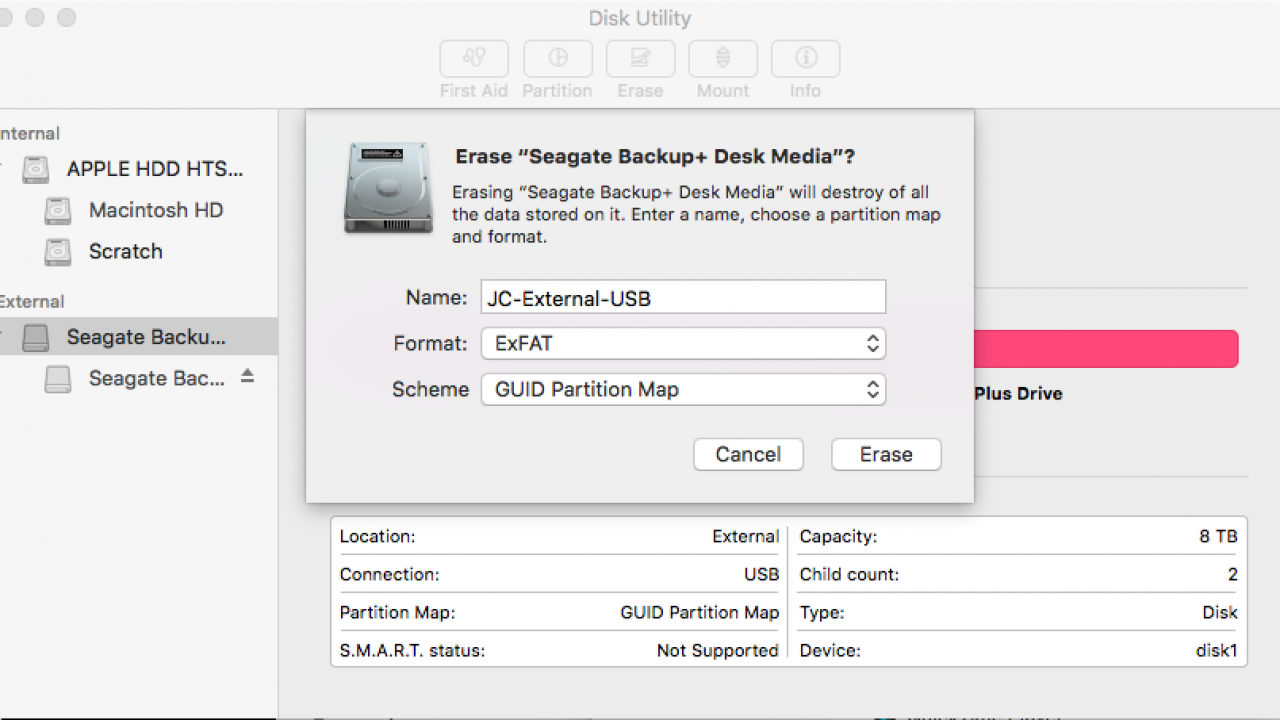

- #Format external hard drive mac and windows online how to
- #Format external hard drive mac and windows online software
- #Format external hard drive mac and windows online free
Although, if you use older versions of macOS, you can get the most of the software without compromising functionality. However, it still runs on an older version, and the developer has not updated it in a long time, probably due to the arrival of APFS.

#Format external hard drive mac and windows online free
And most importantly, the software is completely free to sue. It has a graphical UI, which is quite clean and easy to use. As its name suggests, the software only works with the drives that are formatted with the HFS, HFS+, and HFSX file systems. HFS Explorer is a pretty good software that can help you read your Mac-formatted drives on Windows. And therefore, the need for alternatives or third-party services to read a Mac-formatted drive on Windows. However, Windows (including the latest version, Windows 10) does not offer support for APFS or HFS+ on its system. Of the two systems, Mac comes with native read support for NTFS, meaning, if a drive is formatted in NTFS, it can be read (only) on macOS. Unless of course, you are on the older version of macOS, which relies on the HFS+ or Hierarchical File System.

While Windows generally uses its latest NTFS or New Technology File System, the operating system on Mac, macOS, usually incorporates the APFS or Apple File System. To give you some background, the file system used on both Mac and Windows is completely different.
#Format external hard drive mac and windows online how to
So if you find yourself in a similar situation, here’s a guide on how to read a Mac-formatted drive on Windows. For, unlike Mac, which can read a Windows-formatted drive natively, Windows, on the other hand, does not provide support for Mac-formatted drives. But, since the two operating systems use different file systems, the same is not a straightforward solution either. While one way to go about this is to connect the systems over a network, it is not an ideal solution for when you have large chunks of files to move around.Īn alternative, and probably the better option of the two, is to use an external drive to move files between different devices. Open the Launchpad and select Other > Disk Utility to open Disk Utility.If you are someone who uses different operating systems - presumably macOS and Windows - you might often find the need to view/share/transfer files between the two systems. That allows you to preserve any existing data.ġ. With the GUID Partition Map, you can non-destructively convert an HFS+ drive or partition (except for older Time Machine drives). Convert Drives and Partitions to APFS (Non-Destructive) It’s a good idea to stick with the older file system unless you set up a new Time Machine drive. But if you have an older Time Machine drive in the HFS+ format, you can’t convert it to APFS without losing data. Important: Time Machine supports APFS starting macOS Big Sur. Depending on the existing file system and partition scheme, you may also be able to convert a drive or partition to APFS without losing any formatting. Don’t get too caught up in the other options unless you prefer an encrypted or case-sensitive file system.

While erasing a drive or partition, selecting APFS should suffice. Disk Utility supports the following APFS formatting options:


 0 kommentar(er)
0 kommentar(er)
